Walk Where Gods Once Trod: A Journey Through Hierapolis
Table of Contents
- History of Hierapolis
- Entry Points to Hierapolis
- Hierapolis Opening and Closing Hours
- Hierapolis-Pamukkale Entrance Fee
- Places to Visit While at Hierapolis-Pamukkale
- How Much Does it Cost to Visit Hierapolis?
- How Much Time Will I Need to Explore Hierapolis?
- What Should You Carry to Hieraopolis?
- When is the Best Time to Visit Hierapolis?
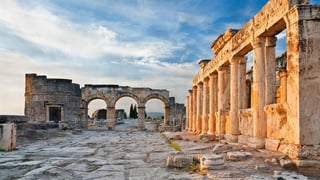
When you're gearing up for your journey to Türkiye, a must-visit destination on your itinerary should be the enchanting city of Hierapolis. Imagine yourself stepping into a realm where each stone and pathway whispers tales from ancient times, creating an exhilarating atmosphere. It's like walking through the pages of history, where the grandeur of the past envelops you in its majestic embrace.
Now, let's talk about making your trip seamless and enjoyable. We've meticulously compiled all the insights and tips from our recent visit to Hierapolis to ensure this. We want to share this treasure trove of information with you so your travel experience can be as smooth and fulfilling as possible.
History of Hierapolis
You're exploring the ancient city of Hierapolis, a significant religious and cultural site in southwestern Turkey. Imagine walking through its historic ruins in Pamukkale. This place, once a cult centre dedicated to Cybele, has a rich history that dates back to the Iron Age.

Picture a Phrygian temple to the mother Goddess Cybele, built in the 7th century BCE. Initially, the local communities worshipped their gods here. But when the Greeks arrived, they brought changes, blending the local culture and religious practices with their own. Under Phrygian rule, this area was considered connected to the underworld, a belief that persisted through Greek and Roman times. The Greeks even linked this temple to Hades, known as Pluton, in Roman mythology.

Fast forward to the 2nd century BCE: Hierapolis transforms into a bustling city under the Seleucid Empire. Emperor Antiochus the Great introduces 2,000 Jewish families to the area, sparking a significant Jewish migration to Hierapolis.
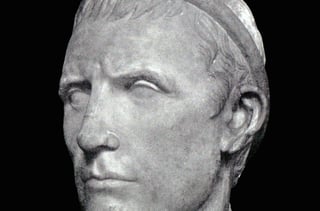
As you move through the timeline to the first century CE, imagine the city's shift to Christianity. A church is established right here in Hierapolis. However, this period also witnessed devastating earthquakes, with the last in 60 CE destroying the city. But the resilient spirit of the people prevails, and Hierapolis is rebuilt.
For centuries, up until the 12th century, the Byzantine Empire governs the city. It remains an essential religious hub, dotted with basilicas and even hosting the tomb of Paul the Apostle. But then, a change in power occurs in the early 12th century. The Seljuk Turks briefly took over, followed by the Crusaders in 1190. Shortly after the Crusaders' conquest, a significant event unfolds - Hierapolis is abandoned, leaving behind the echoes of its rich and diverse history for you to discover.

Entry Points to Hierapolis
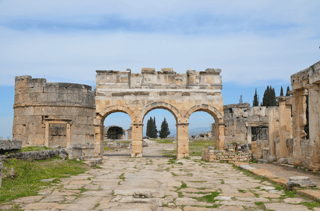
When you visit Hierapolis, you have three entry options:
- The Town Center Entrance
- North Entrance
- South Entrance
At each of these entrances, you'll find ticket offices for your convenience.
If you're part of a tour group, you should not worry about this. But, if you're travelling independently like people with cars, the South Entrance is your best bet. It might take a minute to find it, but paying 20 Lira for parking is a small price for the peace of mind you get knowing your rental car is safe.
Hierapolis Opening and Closing Hours
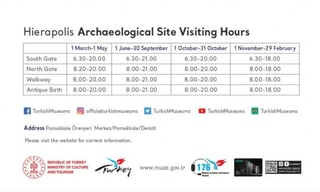
When planning a visit to Hierapolis-Pamukkale, you must know about the opening hours since they vary by season. You can enter from the south gate at 6.30 am in the summer and stay until 9 pm. However, winter hours vary and depend on the weather, so it's best to check before your visit. For instance, in the winter of 2023, the opening hours were from 6:30 am to 6 pm.
Hierapolis-Pamukkale Entrance Fee
Your ticket grants you access to the Ancient City of Hierapolis and the Pamukkale travertines. As of February 2023, the entrance fee is 200 Lira for adults and children over 6, and parking costs an additional 20 Lira.
Consider the All Turkish Museum Pass to explore more of Türkiye. Priced at 1000 Lira as of February 2023, this pass gets you into Hierapolis-Pamukkale and covers entry to 300 museums and archaeological sites nationwide. Plus, it offers the convenience of skipping the entrance line.
Places to Visit While at Hierapolis-Pamukkale
As you explore Hierapolis, pay close attention to these remarkable sights:
Gates of Hierapolis
Imagine stepping into a thriving Roman city renowned in ancient times for its thermal springs and religious significance. Hierapolis, with its rich history, boasts a well-established infrastructure. You'll walk along a street once the heartbeat of the city's commercial and social life. This street stretches over 1.2 kilometres and is remarkably well-preserved, inviting you to step back in time.
At the entrance of the city stand the Gates of Hierapolis. These monumental arches are architectural marvels and hold significant religious and cultural value. The town's thermal springs, believed to possess healing properties, were sacred. It made Hierapolis a magnet for pilgrims from various ancient civilisations. Today, as you wander through the ruins, you'll be awed by the incredible preservation of Main Street and the old city gates. These remnants illuminate the city’s rich cultural heritage and architectural history.
Gate of Domitian

This gate, named after the Roman Emperor Domitian, served as the main entrance to the city from the south. It's notable for its splendid three arches and the detailed carvings that adorn it. Watch for these remarkable features as they represent the city's rich historical and architectural legacy.
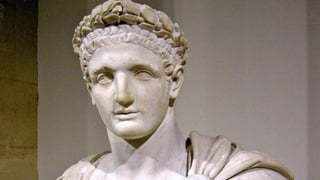
Frontinus Gate

Imagine walking through the ancient city of Hierapolis and across the Frontinus Gate. This gate, named after the Roman governor Sextus Julius Frontinus, dates back to the second century AD. As you stand before it, picture the Roman soldiers who once guarded this entrance. The gate was a crucial part of the city's defensive walls. Take a moment to explore its ruins and marvel at the complex defensive systems constructed by the ancient Romans.
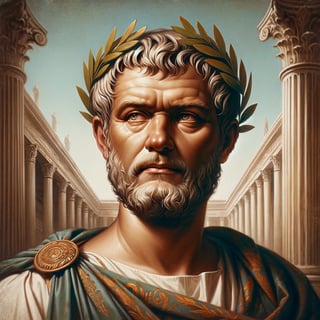
North Byzantine Gate
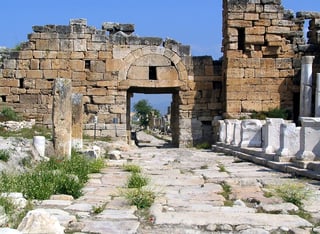
Now, shift your journey to the North Byzantine Gate. This medieval gate is another testament to Hierapolis's rich history. Built during the Byzantine period, it mirrors the purpose of the Frontinus Gate – safeguarding the city from invaders. As you explore, visualise the Byzantine guards who once stood watch here. The gate's structure, part of the city's formidable defensive walls, offers a glimpse into the architectural prowess of the era.
Roman Ancient Theatre
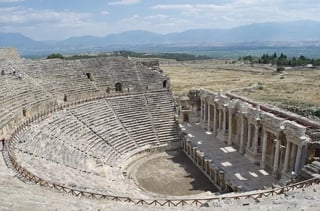
When you visit the Hierapolis Ancient Theatre, you'll be stepping into a piece of history that dates back to the 2nd century BCE. This theatre, remarkably well-preserved, once seated up to 15,000 spectators. Imagine yourself among the crowd, watching a vibrant mix of plays, music, and dances.
Remember, the Greeks founded Hierapolis in the 7th century BCE and later became a thriving Roman colony. It made the city a crucial point on the East and West trade routes. You can almost feel the energy of countless travellers who must have gathered in this theatre.
As you look around, you'll notice the theatre's unique design. It's built into a hillside and features three levels of seating. At the bottom of the hill, the stage is framed by a portico with elegant columns. Picture the performers and crew bustling in and out of the rooms behind the stage.
While exploring, you'll find that access is limited. You can descend only the first few rows of seats, and getting closer to the main stage isn't allowed. You might be eager to see it up close! But here's an interesting fact: while the stage remains primarily original, the statues you see are replicas. The original sculptures now reside in the Hierapolis Archaeology Museum, conveniently located on-site. This museum offers another layer of insight into the theatre's rich history and the city itself.
Necropolis
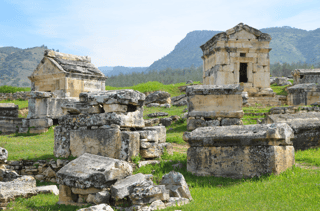
Imagine you are walking through the Necropolis of Hierapolis. You'll immediately notice its remarkable architectural features and the intricate decorations that adorn many tombs. Picture this: tombs carved directly from natural rock formations, each with its ornate facade. As you explore, you'll see detailed reliefs that capture scenes from everyday life, along with stories from mythology and religious symbols.
Pay special attention to some of the most renowned tombs, like the Tomb of the Gladiators, the Sepulchre of the Courtesans, and the Tomb of Flavius Zeuxis. Each has its unique story and artistic significance.
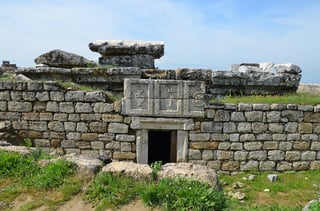
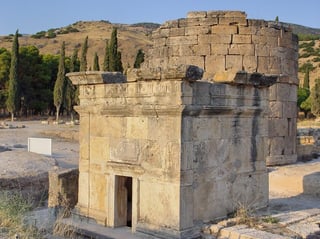
Remember, this part of Hierapolis is expansive and stretches uphill. So, if you're planning to delve into these historical wonders, bring plenty of water. And, if you're visiting during the summer, an umbrella for shade will be your best friend in the heat. This journey is not just a walk through ancient ruins; it's a step back into history.
Martyrium of St. Philip
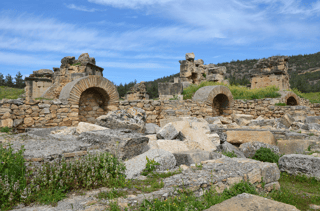
You are exploring the Martyrium of St. Philip, a site steeped in history and religious significance, in the ancient city of Hierapolis, now part of modern-day Turkey. Imagine standing where St. Philip, one of the twelve apostles of Jesus, met his martyrdom in the first century AD. This sacred place, perched on a hillside, offers a view of the old city.
Here, you'll find a quaint chapel and a mysterious underground chamber. It's said that this chamber holds the final resting place of St. Philip. As you wander through this revered site, feel the weight of centuries of faith and history surrounding you.
Hierapolis Archaeology Museum
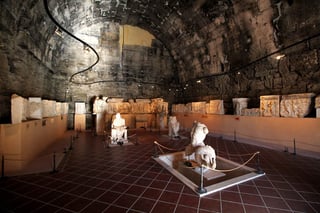
When you visit the Hierapolis Archaeology Museum in Hierapolis-Pamukkale, an ancient city renowned for its stunning array of statues, you're in for an enriching museum experience, complete with guidance from experts. This museum proudly showcases a vast collection of artefacts from Hierapolis and other significant archaeological sites in the region. These treasures were unearthed during excavations in the late 19th and early 20th centuries, with many of the most remarkable finds now residing within the museum's walls.
As you explore the museum, you'll encounter an impressive array of statues depicting various gods and goddesses, each telling its story of ancient beliefs and artistry. Additionally, the museum features several inscribed stone slabs, offering a glimpse into the rich history and language of the time.
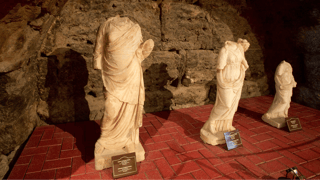
One of the standout exhibits you shouldn't miss is the collection of Roman baths. These baths were more than just bathing places; they were centres of healing and socialising in Roman society. The museum continues beyond showcasing indoor artefacts. Step outside into the garden, where you'll find an array of plants integral to traditional medicine in ancient times.
Plutonian Devil’s Gate
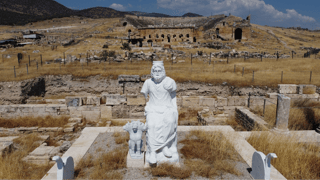
Imagine standing at the edge of the Plutonian Devil's Gate beneath Apollo's Temple. Beneath your feet, deep fault lines release toxic gas, which is deadly if exposed for too long. Picture this: ancient priests of Hierapolis proclaiming this very spot as the entrance to the underworld. They'd brave the toxic zones of the temple, not breathing in the lethal gases, all to prove their divine connection to the awe-struck citizens.
Fast forward to today: that sculpture of Pluto you see? It's a recent addition to the latest renovations. But don't let that diminish its allure – it's still an incredibly excellent site to witness.
Temple of Apollon

When you explore the Ancient Temple of Apollon in Hierapolis, you're stepping into a remarkable piece of history and religious significance nestled in modern-day Türkiye. This temple, a dedication to Apollon, the Greek god of light and music, was initially built during the Hellenistic period. As you walk through, imagine the various phases of renovations and additions it underwent in the Roman era.
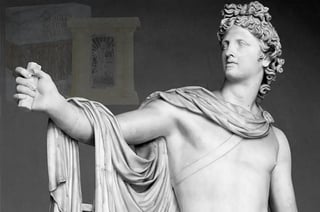
It wasn't just any temple; it was a significant hub of worship in the region, celebrated for its stunning architecture and intricate decorations. As you take in the sights, you're not just seeing stones and columns; you're witnessing a story of devotion and artistry spanning centuries.
Basilica Bath

When you visit the Basilica Bath, you're stepping into a crucial piece of history in Hierapolis. Imagine yourself amid a bustling hub of social and cultural life, where the bath complex was not just a place for relaxation but a testament to remarkable architectural and engineering feats.
As you wander through the remnants of this grand complex, picture the sizeable central pool that once dominated the area, surrounded by several smaller pools. Think about the changing rooms where people from all walks of life would have gathered and the intricate heating system that was a marvel of its time.
What remains today are the ruins that let you peek into the advanced engineering and architectural prowess of the ancient Romans. It's more than just ruins; it's a portal into the daily lives and traditions of those who lived in the ancient city of Hierapolis. Each stone and fragment tells a story of a vibrant past, giving you a unique opportunity to connect with history.
Antique Pool or Cleopatra’s Pool

You might have heard of Cleopatra's exclusive bathing spot, the Antique Pool in Hierapolis. Imagine Cleopatra herself avoiding the masses to soak in these thermal waters within a temple dedicated to Apollo. Tragically, an earthquake demolished the temple, but the historic and therapeutic bath still stands. Picture ancient pillars resting at the pool's bottom.
Now, while the Antique Pool is steeped in history, it's become a tourist hotspot. You'll likely encounter large groups enjoying the hot springs. If you're keen on experiencing this, try to visit early to avoid the crowds. Remember, it's more of a tourist attraction than a historical site.
Remember, if you decide to enter the Antique Pool, there's an extra charge of 100 Lira.
How Much Does it Cost to Visit Hierapolis?
When planning your trip to Hierapolis, your costs will depend on how you like to travel, where you prefer to stay, and how long you plan to visit. Let's break down what you might expect to spend:
- Transportation: Your journey will likely begin at Denizli Cardak Airport, about 20 km from Hierapolis. From there, you have options. A taxi or shuttle to the city centre might cost around USD 20. Alternatively, consider renting a car like we did. It's a great way to explore the area, with straightforward roads and clear signage.
- Accommodation: You'll find various places, from economical hostels to more upscale hotels. Plan for anywhere between USD 50 to 250 per night, depending on your choice.
- Admission Fees: Hierapolis has an admission fee. This fee changes with the seasons, but as of 2023, it's about USD 10.
- Food and Drink: The local area offers a variety of dining options, from traditional Turkish cuisine to international dishes. An essential meal typically costs between USD 5 and 10 per person.
How Much Time Will I Need to Explore Hierapolis?
Are you planning a visit to the Hierapolis ruins in Turkey? Considering its vastness and historical importance, allocating enough time to appreciate the site entirely is essential. As you explore Hierapolis, one of Turkey's most significant archaeological sites, you'll find that walking between some of the major landmarks can take around 45 minutes. To absorb the atmosphere and explore the ruins thoroughly, you might spend over two hours wandering through this richly historic area. Make sure to give yourself ample time to soak in the history and beauty of Hierapolis!
What Should You Carry to Hieraopolis?
You'll find convenient lockers at the Pamukkale thermal pools, offered for a reasonable fee to store your belongings securely. It means you won't need to lug everything around with you. For a delightful experience in the pools, it's best to leave your tripod back at the hotel, as it's not permitted, and instead, just bring the essentials in a waterproof bag.
Ensure you carry sunglasses, sunscreen, and a good amount of water. Pamukkale can get quite hot during the summer, and the last thing you want is to suffer from sunburn or dehydration during your visit. Also, be mindful that you'll need to walk barefoot around the pools to prevent damage, so bring suitable footwear like flip-flops that you can easily slip on and off.
And, if you're up for a dip in Cleopatra’s Pool – which comes with an extra charge but is highly recommended – don't forget to pack your swimsuit, a towel, and a change of clothes, just in case.
When is the Best Time to Visit Hierapolis?
When you visit Pamukkale, you're stepping into one of Turkey's most popular attractions. It's a place teeming with visitors, particularly in the peak summer season of June through August. Be ready for the crowds.
As you wander around, you'll notice the pools are the main gathering spots for most people. But here's a tip: venture along the edges if you're aiming for that Instagram-worthy shot. There, you'll find quieter spots, perfect for capturing both the stunning views and the serene ambience of the area. It's a little secret that can make your visit even more memorable.
